Virtual and Real-Time Synchronous Interaction for Playing Table Tennis with Holograms in Mixed Reality
Abstract
1. Introduction
2. System Design
2.1. Selection of Input Devices
2.2. System Architecture and Device Deployment
2.3. Coordinates Unification
3. Algorithms
3.1. Collision Detection
3.1.1. Analysis of the Cause of Losing Collision Detection
3.1.2. Trajectory Error Analysis and Trajectory Simulation
3.1.3. Specific Process of Collision Detection
3.2. Simulate Ball Bounce
3.3. The Rotation of The Ball
3.3.1. The Creation of Spinning Ball
3.3.2. The State of Spinning Ball
4. Experiment
4.1. Methods
4.2. Results
5. Conclusions
Author Contributions
Funding
Conflicts of Interest
References
- Li, M. An Interactive Artifact: Augmented Reality; Social Science Academic Press: Beijing, China, 2016. [Google Scholar]
- Su, K.; Zhao, S. The Technical Principle and Commercial Application of Virtual Reality and Augmented Reality; The People’s Posts and Telecommunications Press: Beijing, China, 2017. [Google Scholar]
- Zhang, Y. Virtual Reality/Augmented Reality Technology and Its Applications; University of Science and Technology of China Press: Hefei, China, 2017. [Google Scholar]
- He, Z.; You, L.; Liu, R.W.; Yang, F.; Ma, J.; Xiong, N. A Cloud-Based Real Time Polluted Gas Spread Simulation Approach on Virtual Reality Networking. IEEE Access 2019, 7, 22532–22540. [Google Scholar] [CrossRef]
- Altarteer, S. Vassilis Charissis: Technology Acceptance Model for 3D Virtual Reality System in Luxury Brands Online Stores. IEEE Access 2019, 7, 64053–64062. [Google Scholar] [CrossRef]
- Zhang, L.; Chen, S.; Dong, H.; El Saddik, A. Visualizing Toronto City Data with HoloLens: Using Augmented Reality for a City Model. IEEE Consum. Electron. Mag. 2018, 7, 73–80. [Google Scholar] [CrossRef]
- Microsoft. Hololens. Available online: https://www.microsoft.com/microsoft-hololens/en-us (accessed on 5 August 2019).
- Qiu, J. VR Virtual Reality; The People’s Posts and Telecommunications Press: Beijing, China, 2016. [Google Scholar]
- Kritzler, M.; Funk, M.; Michahelles, F.; Rohde, W. The virtual twin: Controlling smart factories using a spatially-correct augmented reality representation. In Proceedings of the International Conference on the Internet of Things, ACM, Linz, Austria, 22–25 October 2017; pp. 1–2. [Google Scholar]
- Amores, J.; Lanier, J. HoloARt:Painting with Holograms in Mixed Reality. In Proceedings of the CHI Conference Extended Abstracts on Human Factors in Computing Systems, Denver, CO, USA, 6–11 May 2017; pp. 421–424. [Google Scholar]
- Pollalis, C.; Fahnbulleh, W.; Tynes, J.; Shaer, O. Holo-Muse: Enhancing Engagement with Archaeological Artifacts through Gesture-Based Interaction with Holograms. In Proceedings of the Tenth International Conference, Stavanger, Norway, 31 May–2 June 2017; pp. 565–570. [Google Scholar]
- Huang, J.M.; Ong, S.K.; Nee, A.Y.C. Visualization and interaction of finite element analysis in augmented reality. Comput.-Aided Des. 2016, 84, 1–14. [Google Scholar] [CrossRef]
- Raymond, F.; Semelle, L.; Courtois, M.; Kervegant, C.; Graeff, D.; Castet, J.; de la Rivière, J.B. A TUI Platform for your Desktop. In Proceedings of the 2015 International Conference on Interactive Tabletops & Surfaces, Funchal, Portugal, 15–18 November 2015; pp. 385–387. [Google Scholar]
- Stănică, I.C.; Moldoveanu, F.; Dascălu, M.I.; Moldoveanu, A.; Portelli, G.P.; Bodea, C.N. VR System for Neurorehabilitation: Where Technology Meets Medicine for Empowering Patients and Therapists in the Rehabilitation Process. In Proceedings of the 6th Conference on the Engineering of Computer Based Systems, ECBS, Bucharest, Romania, 2–3 September 2019; pp. 5:1–5:7. [Google Scholar]
- Parkes, R.; Forrest, N.; Baillie, S. A Mixed Reality Simulator for Feline Abdominal Palpation Training in Veterinary Medicine. In MMVR; University of London: London, UK, 2009; pp. 244–246. [Google Scholar]
- Regenbrecht, H.; Baratoff, G.; Wilke, W. Augmented reality projects in the automotive and aerospace industries. IEEE Comput. Graph. Appl. 2005, 25, 48–56. [Google Scholar] [CrossRef] [PubMed]
- Gardner, M.; O’Driscoll, L. MiRTLE (Mixed-Reality Teaching and Learning Environment): From prototype to production and implementation. In EC-TEL 2011 Workshop: Learning Activities across Physical and Virtual Spaces; AcrossSpaces: Palermo, Italy, 2011. [Google Scholar]
- Botden, S.M.B.I.; Jakimowicz, J.J. What is going on in augmented reality simulation in laparoscopic surgery? Surg. Endosc. 2009, 23, 1693–1700. [Google Scholar] [CrossRef] [PubMed]
- Sparks, J.L.; Vavalle, N.A.; Kasting, K.E.; Long, B.; Tanaka, M.L.; Sanger, P.A.; Schnell, K.; Conner-Kerr, T.A. Use of silicone materials to simulate tissue biomechanics as related to deep tissue injury. Adv. Ski. Wound Care 2015, 28, 59–68. [Google Scholar] [CrossRef] [PubMed]
- Carbone, M.; Condino, S.; Mattei, L.; Forte, P.; Ferrari, V.; Mosca, F. Anthropomorphic ultrasound elastography phantoms-Characterization of silicone materials to build breast elastography phantoms. In Engineering in Medicine and Biology Society; IEEE: Piscataway, NJ, USA, 2012; pp. 492–494. [Google Scholar]
- Lee, S.T.; Sanford, J.A. An Evaluation of the iPod Touch as an Alternative Low-Vision Magnifier for People with Low Vision. Universal Access in Human-Computer Interaction. In User and Context Diversity; Springer: Berlin/Heidelberg, Germany, 2013; pp. 1019–1023. [Google Scholar]
- Chen, H.; Lee, A.S.; Swift, M.; Tang, J.C. 3D Collaboration Method over HoloLens and Skype end Points (ImmersiveME’15); ACM: New York, NY, USA, 2015; pp. 27–30. [Google Scholar]
- Vaughan, N.; Dubey, V.N.; Wainwright, T.W.; Middleton, R.G. A review of virtual reality based training simulators for orthopaedic surgery. Med. Eng. Phys. 2016, 38, 59–71. [Google Scholar] [CrossRef] [PubMed]
- Ferrari, V.; Viglialoro, R.M.; Nicoli, P.; Cutolo, F.; Condino, S.; Carbone, M.; Siesto, M.; Ferrari, M. Augmented reality visualization of deformable tubular structures for surgical simulation. Int. J. Med. Robot. Comput. Assist. Surg. 2016, 12, 231–240. [Google Scholar] [CrossRef] [PubMed]
- Condino, S.; Carbone, M.; Ferrari, V.; Faggioni, L.; Peri, A.; Ferrari, M.; Mosca, F. How to build patient-specific synthetic abdominal anatomies. An innovative approach from physical toward hybrid surgical simulators. Int. J. Med. Robot. Comput. Assist. Surg. 2011, 7, 202–213. [Google Scholar] [CrossRef] [PubMed]
- Hu, X. The Foundation and Application of Virtual Reality Technology; Beijing University of Posts and Telecommunications Press: Beijing, China, 2009. [Google Scholar]
- Liu, G. Virtual Reality Technology; Tsinghua University Press: Beijing, China, 2011. [Google Scholar]
- Lou, Y. Introduction to Virtual Reality and Augmented Reality Technology; Tsinghua University Press: Beijing, China, 2016. [Google Scholar]
- HTC Vive. Available online: https://www.vive.com/cn/product/ (accessed on 5 November 2018).
- Available online: https://www.oculus.com/rift-s/ (accessed on 7 October 2019).
- Available online: https://www.playstation.com/en-us/explore/playstation-vr/ (accessed on 2 March 2020).
- Holographic Remoting Player. Available online: https://docs.microsoft.com/en-us/windows/mixed-reality/holographic-remoting-player (accessed on 15 July 2020).
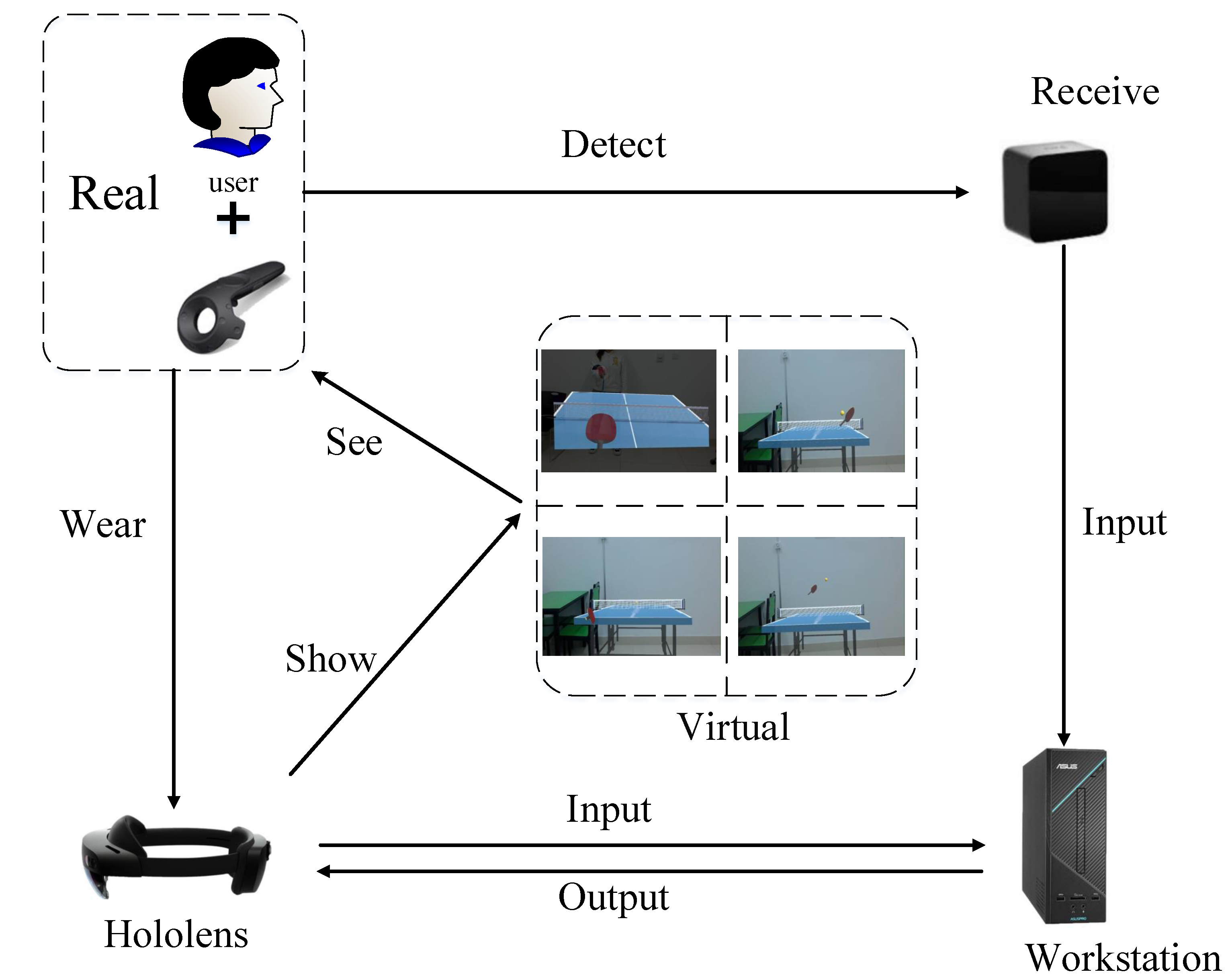



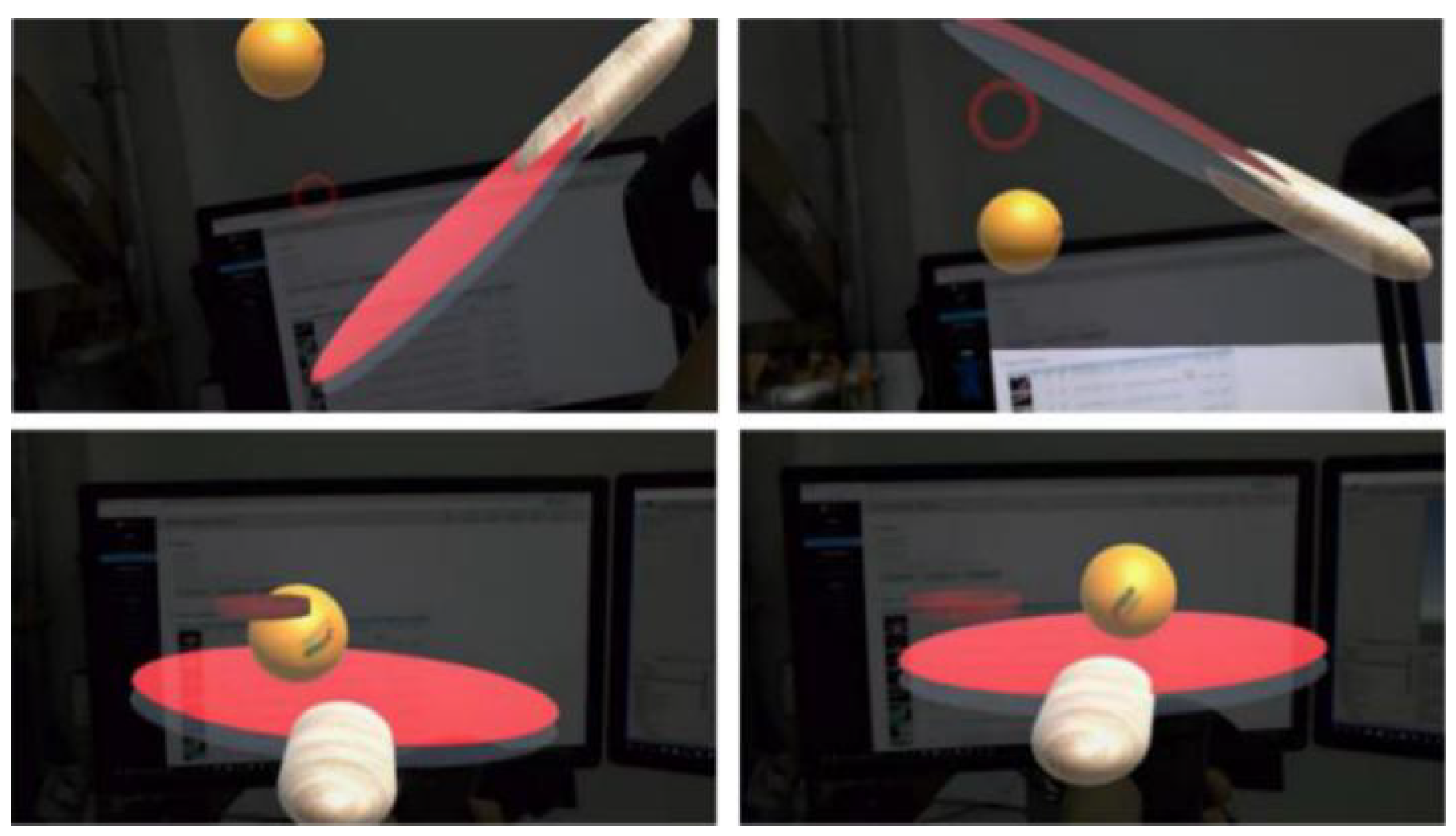



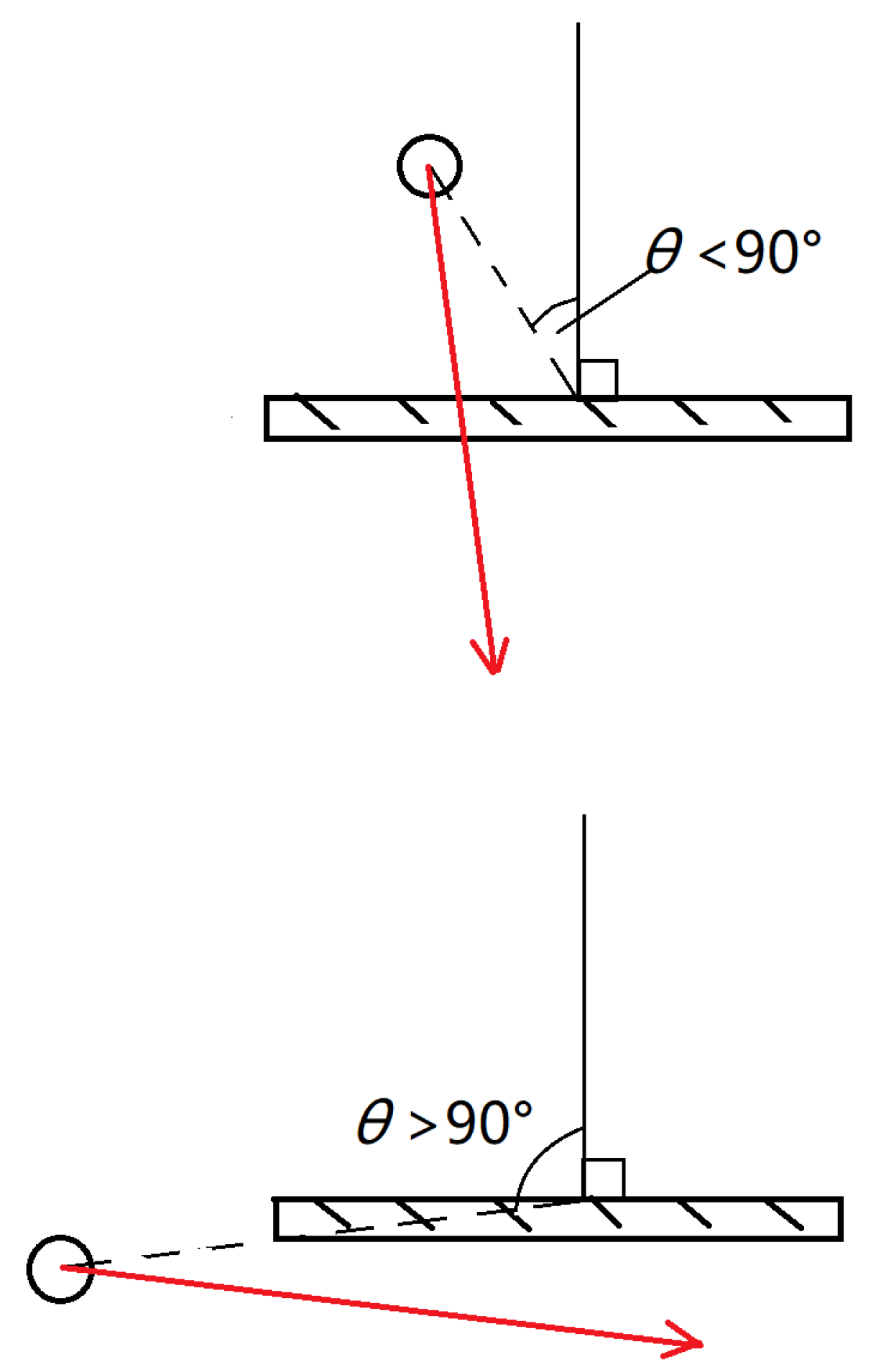

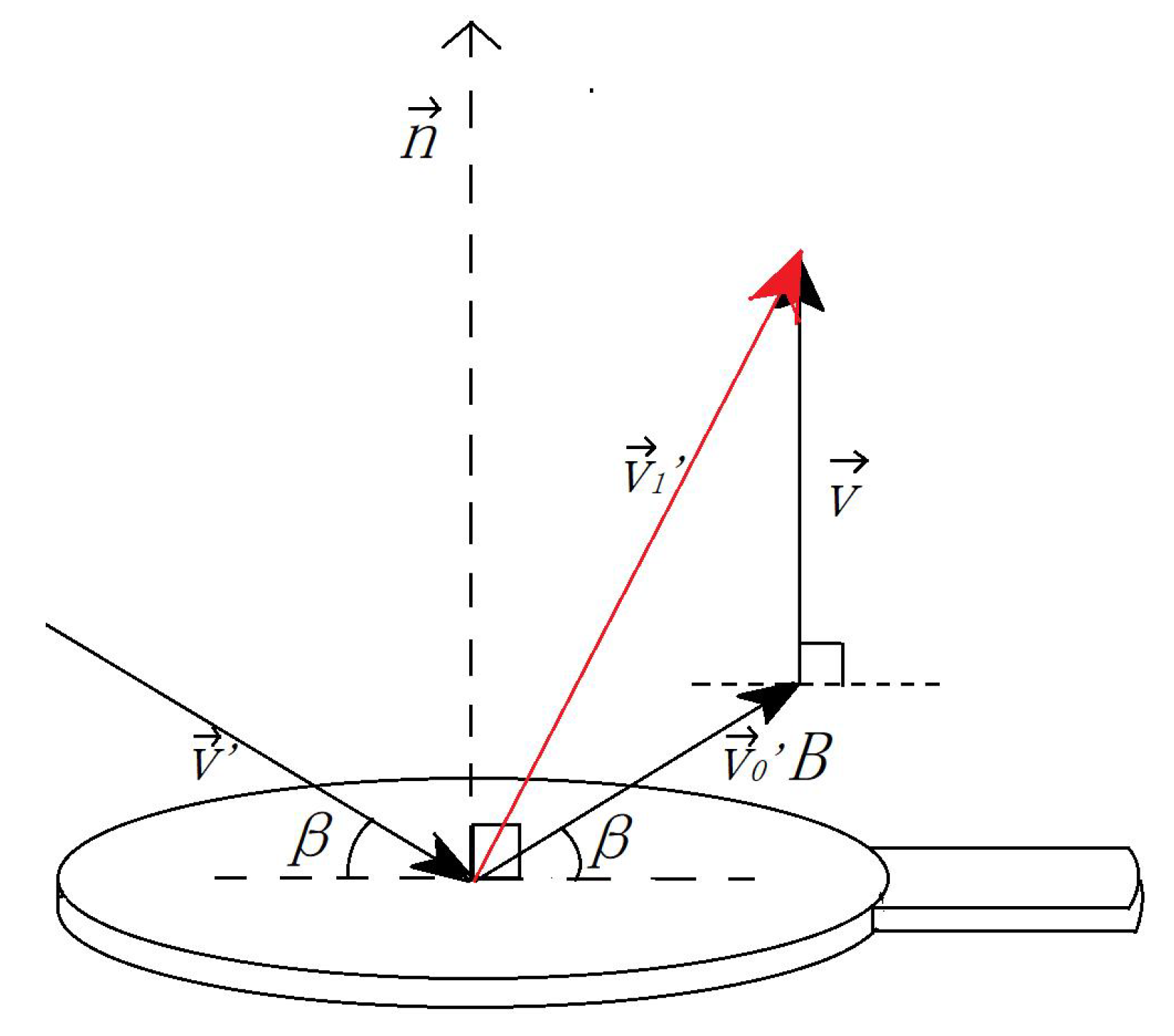

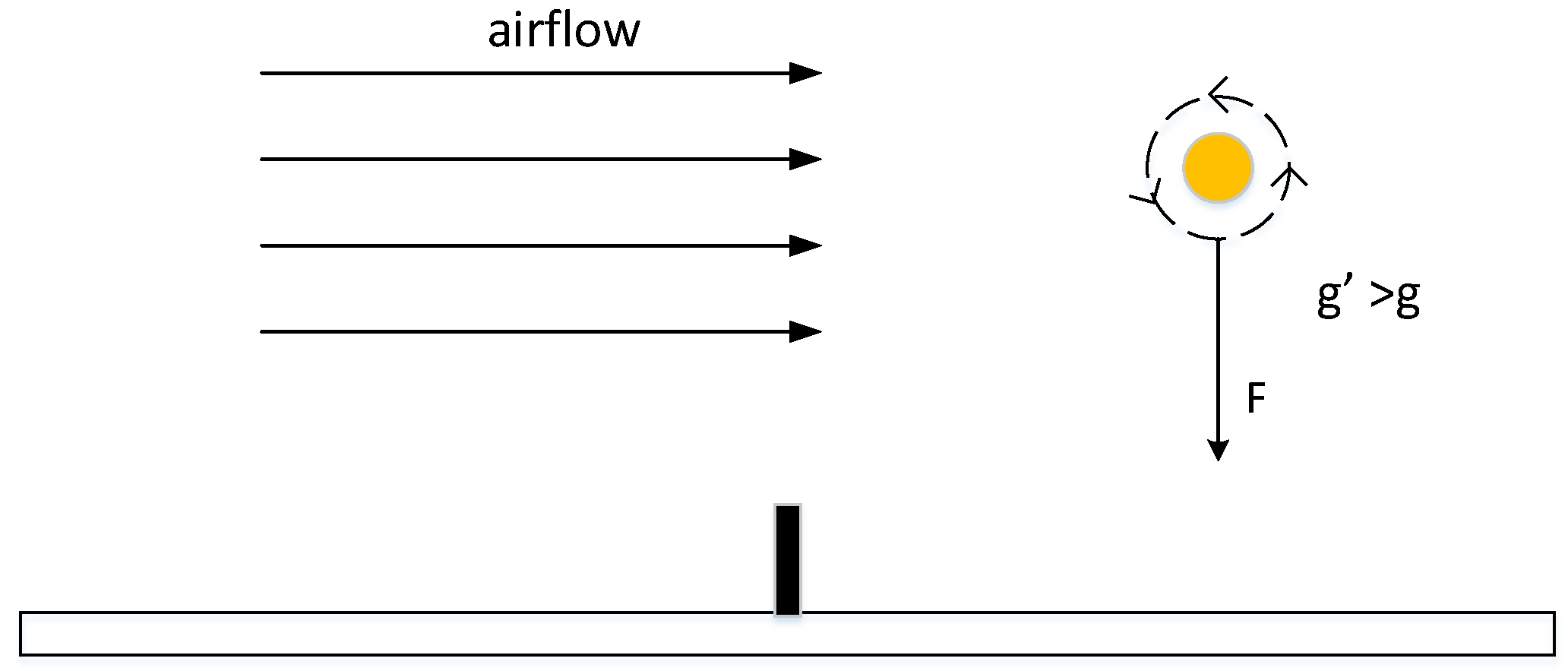

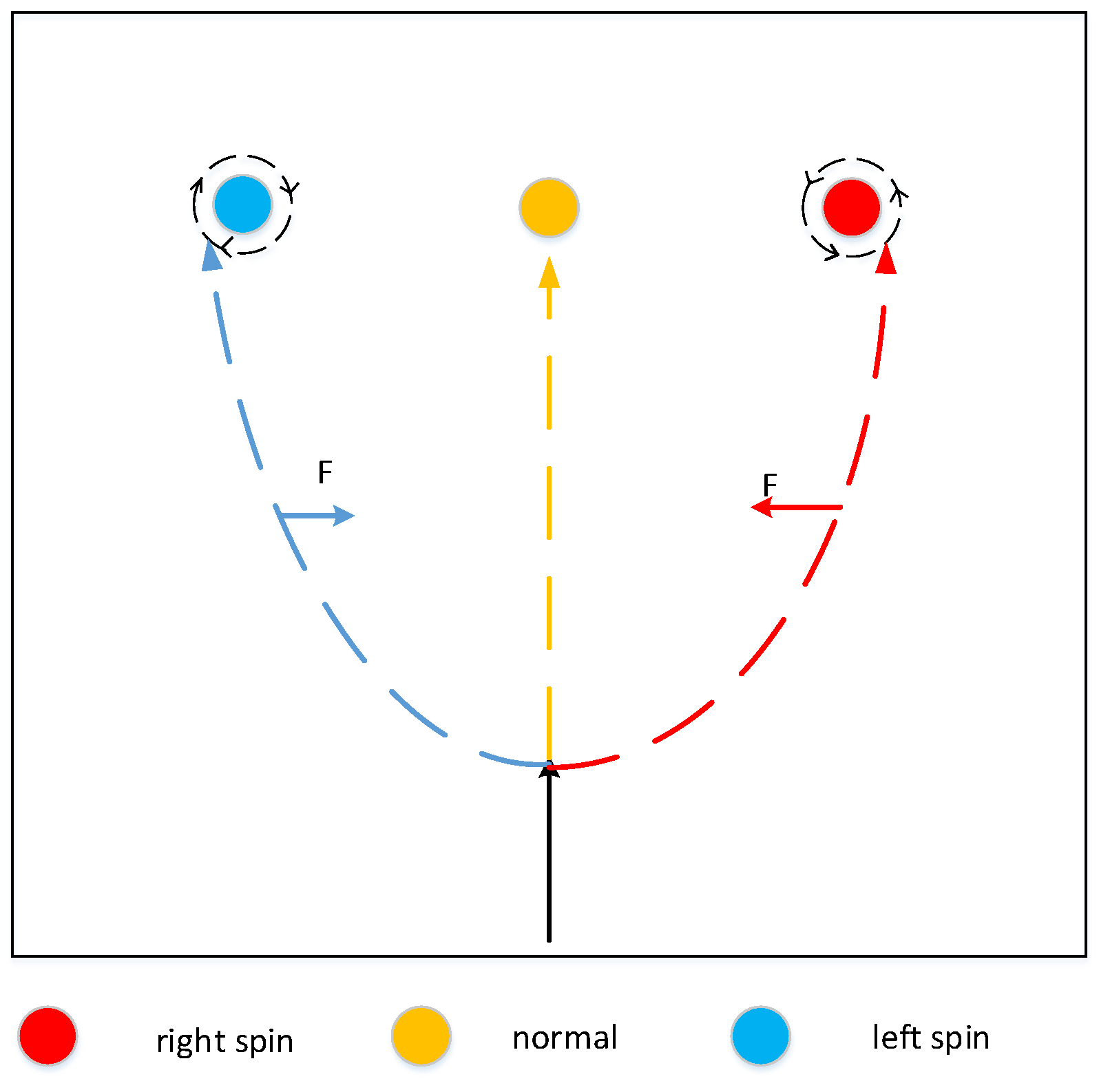


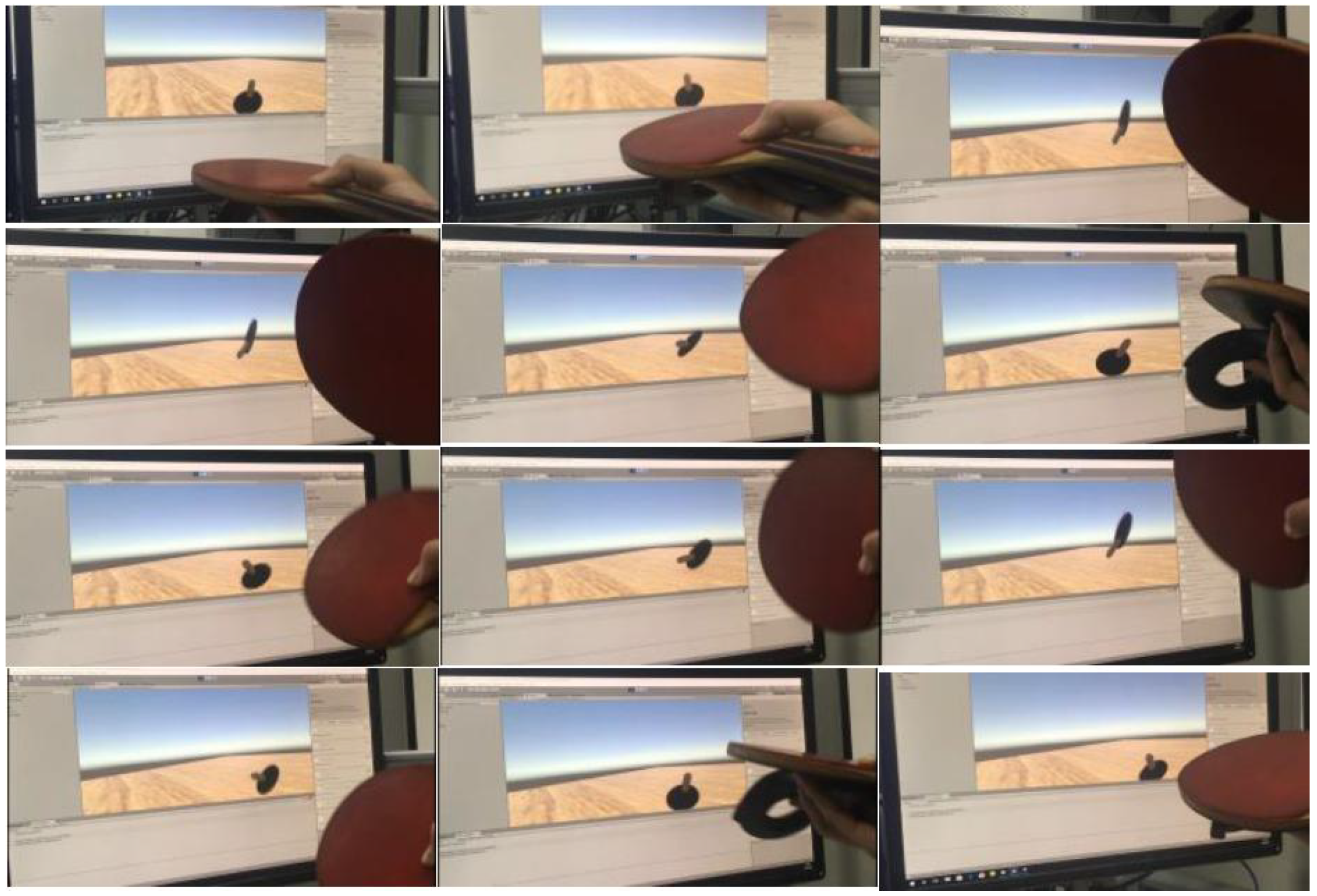
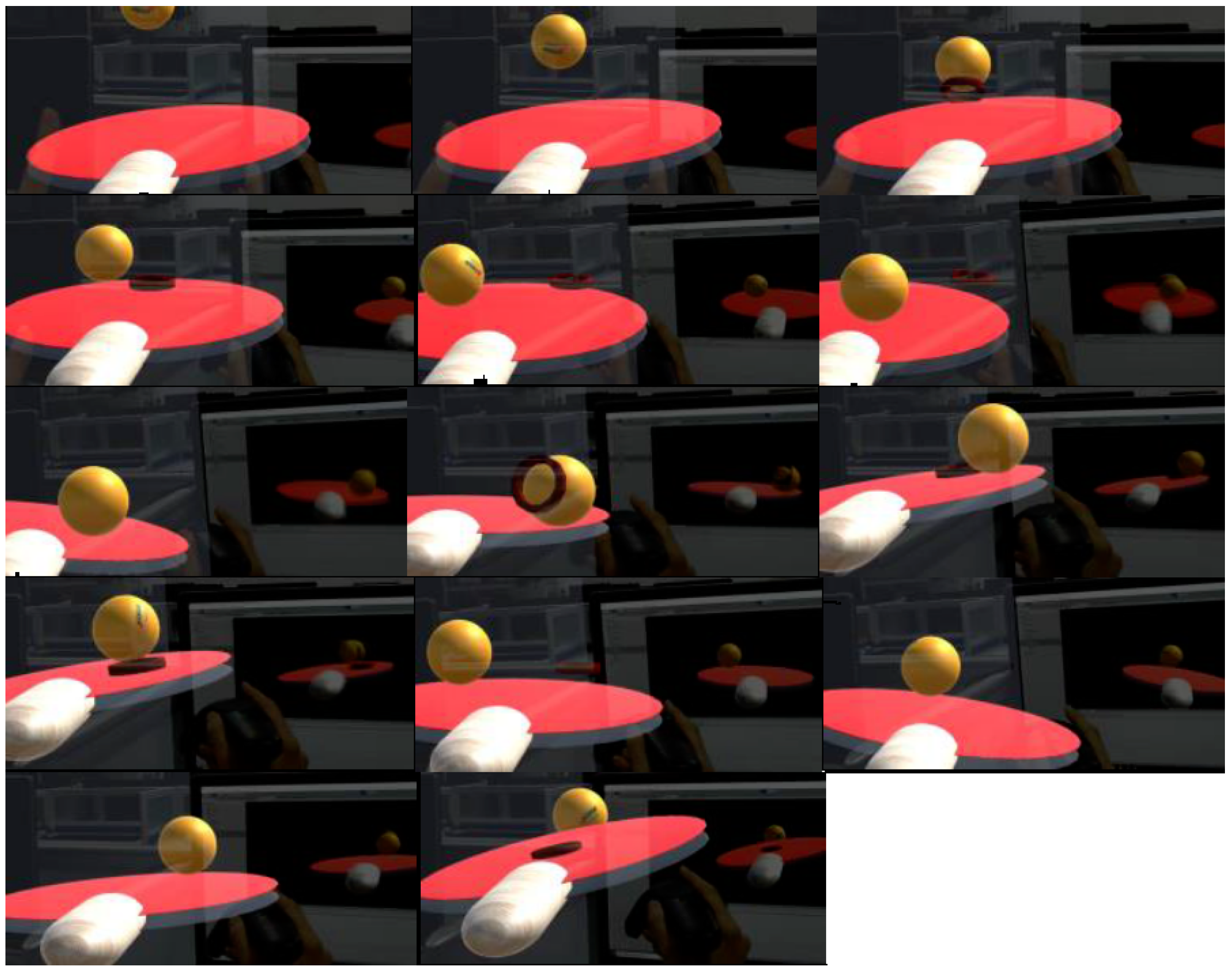
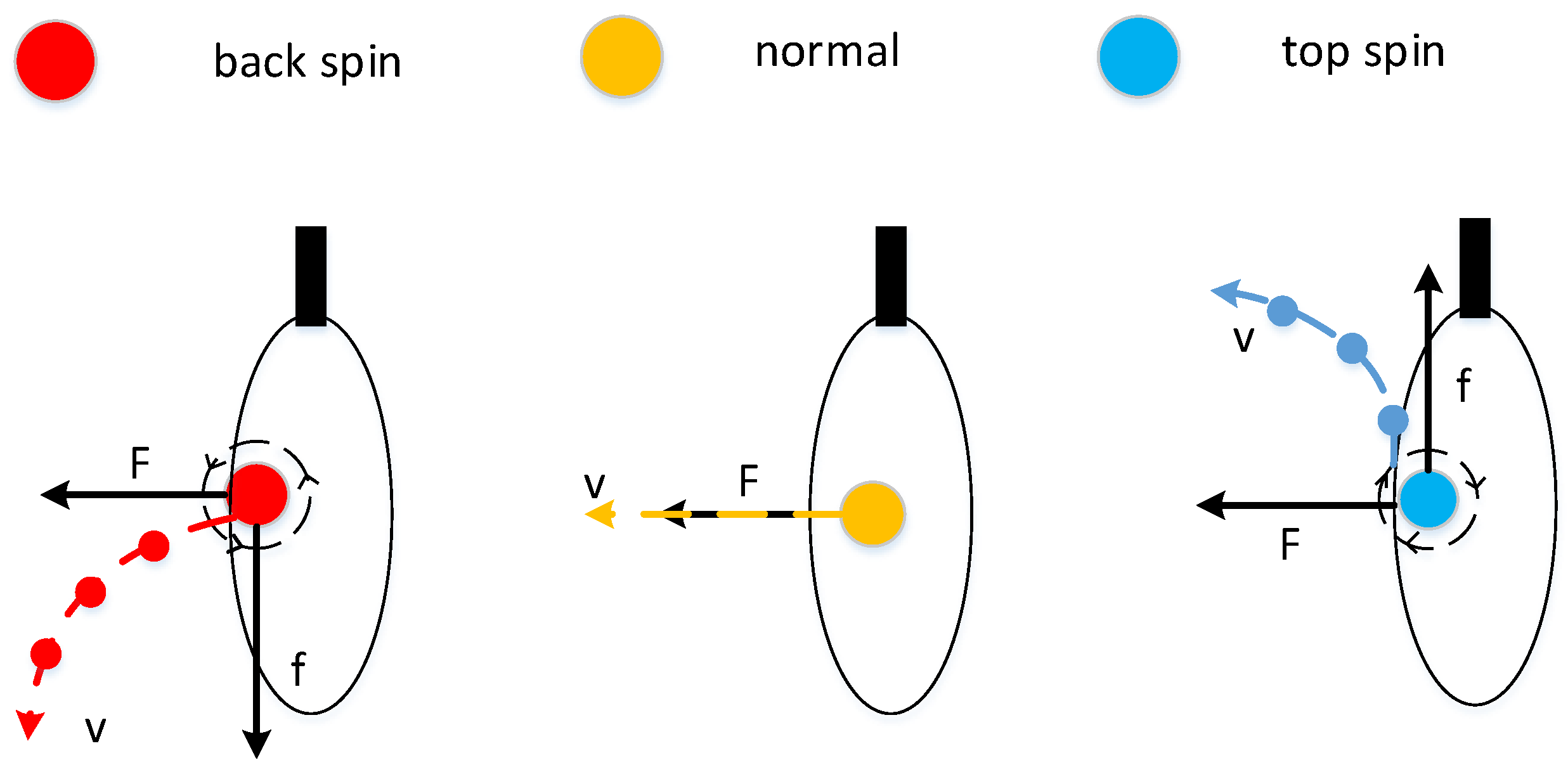
| Representative | Anti-Occlusion | Accuracy | Anti-Interference | Low Cost | Real-Time | Other | |
|---|---|---|---|---|---|---|---|
| Laser locating | HTC Vive-Lighthouse | not good | good | good | not good | good | poor durability |
| Infrared optical locating | Oculus Rift | not good | good | good | not good | good | Small coverage |
| Visible light locating | PS VR | not good | not good | not good | good | good | Small coverage |
| Ultrasonic locating | Hexamite HX11 | not good | good | not good | good | not good | |
| Computer vision motion capture | Leap Motion | not good | not good | not good | good | good | Large amount of calculation |
| Based on inertial sensors | Perception Neuron | good | good | good | good | good | Accumulation error exists |
© 2020 by the authors. Licensee MDPI, Basel, Switzerland. This article is an open access article distributed under the terms and conditions of the Creative Commons Attribution (CC BY) license (http://creativecommons.org/licenses/by/4.0/).
Share and Cite
Wang, B.; Zhang, R.; Xi, C.; Sun, J.; Yang, X. Virtual and Real-Time Synchronous Interaction for Playing Table Tennis with Holograms in Mixed Reality. Sensors 2020, 20, 4857. https://doi.org/10.3390/s20174857
Wang B, Zhang R, Xi C, Sun J, Yang X. Virtual and Real-Time Synchronous Interaction for Playing Table Tennis with Holograms in Mixed Reality. Sensors. 2020; 20(17):4857. https://doi.org/10.3390/s20174857
Chicago/Turabian StyleWang, Bin, Ruiqi Zhang, Chong Xi, Jing Sun, and Xiaochun Yang. 2020. "Virtual and Real-Time Synchronous Interaction for Playing Table Tennis with Holograms in Mixed Reality" Sensors 20, no. 17: 4857. https://doi.org/10.3390/s20174857
APA StyleWang, B., Zhang, R., Xi, C., Sun, J., & Yang, X. (2020). Virtual and Real-Time Synchronous Interaction for Playing Table Tennis with Holograms in Mixed Reality. Sensors, 20(17), 4857. https://doi.org/10.3390/s20174857




